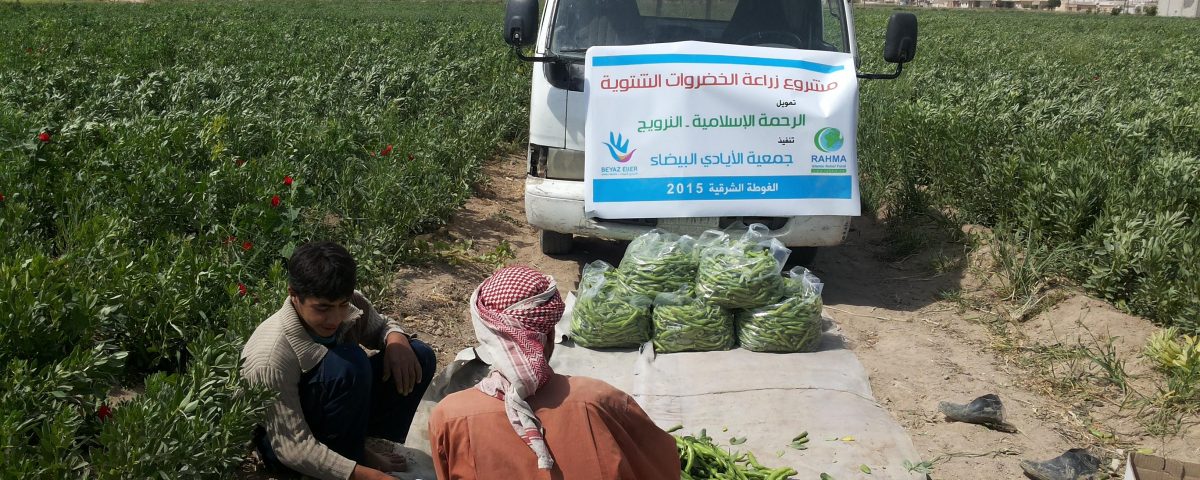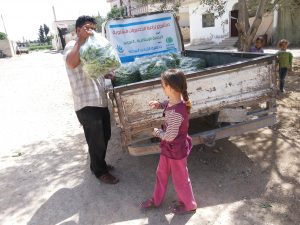Winter Vegetables: Cultivation of Faba Beans

Between 1/11/2015 and 1/5/2016
Despite the continued siege imposed on our people in Damascus countryside and the consequent extreme hardship – driven by poverty, hunger and incapacity, a new hope has appeared through enabling the besieged households to become self-reliant in obtaining their food needs and opening employment opportunities to them.
Supporting Partner
Beyaz Eller organization has collaborated with “Rahma Islamic Relief Fund” to open employment opportunities to the besieged households in the area, by employing 30 workers throughout 6 months to grow 30 acres of faba beans.
Afterwards, the harvest was distributed to the besieged families to cover part of their needs for this key legume during winter.
Where Are We Active?
The imposed siege of Eastern Ghouta (Damascus countryside) and the consequent humanitarian hardship– driven by poverty, hunger, and unemployment, has catalyzed the implementation of this project in this area. Thirty acres were cultivated with Faba beans which is a key legume in Syria.
The average productivity of each acre was 500 kilograms, as the total harvest amounted to 15,000 kilograms for the cultivated area.
Project Beneficiaries
The project has revived enthusiasm for work and earning livelihood, and brought back greenness to the agricultural land, which benefits the afflicted residents and meets part of their food needs. The harvest was distributed to 500 families, each received 30 kilograms of beans, divided into two times.
Effect
Economic Effect:
- The project cultivated the agricultural land by growing a key product that protects it against desertion.
- It revived local workforce by hiring 30 workers for 6 months.
- It met 500 households’ need for a basic winter product– faba beans.
- It alleviated the economic burden of many afflicted households.
- After collecting the harvest, the project revived livestock economy by provision of farms (bean leaves and trunks and grasses).
Social and Psychological effects:
- It brought hope of repeating this project to meet basic humanitarian needs in the area.
- It revived the spirit of work and land cultivation.
It alleviated the social and psychological misery driven by economic hardship.



